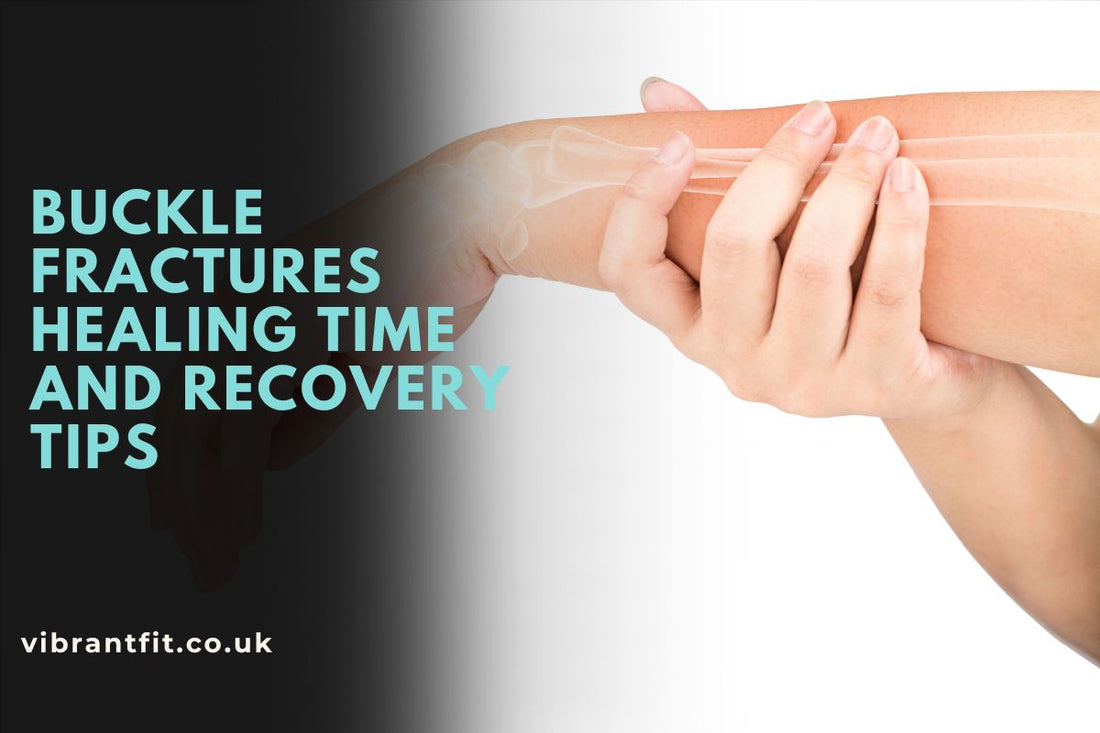
What are Buckle Fractures?
Share
Buckle fractures are common bone injuries, especially in children. They happen when one side of a bone bends or buckles under pressure but does not break completely. Children’s bones are softer and more flexible than adults’, so they tend to bend rather than snap. These fractures are also called torus or impacted fractures. Usually caused by falls or accidents during play, buckle fractures require proper care to ensure quick healing. Knowing the signs helps parents act quickly and get the right treatment.
What Are Buckle Fractures?

A buckle fracture occurs when pressure compresses one side of the bone, causing it to bulge without cracking fully. Imagine squeezing a soft aluminium can until it dents but stays in one piece. This is similar to how the bone behaves. The most affected bones are in the forearm near the wrist — the radius and ulna. However, other long bones like the femur, tibia, fibula, or humerus can be involved. Adults rarely get buckle fractures because their bones are harder and less flexible.
Who Is Most Likely to Get Buckle Fractures?
Children under 12 years old are the most likely to have buckle fractures. Their bones are still growing and remain soft and bendy. Because of this, their bones bend rather than break when they fall or have an impact. Playing sports, running, and climbing increase the risk of falls. Adults usually do not get buckle fractures, but older adults with weaker bones, such as those with osteoporosis, might be at risk. Falls are the leading cause, especially when children use their hands to break a fall.
Signs and Symptoms of Buckle Fractures

Buckle fractures often cause mild symptoms. These include:
-
Pain around the injured bone.
-
Swelling and tenderness.
-
Bruising or skin discolouration.
-
A noticeable bump or bulge on the bone.
-
Reluctance to use the injured limb.
How Are Buckle Fractures Diagnosed?
Doctors diagnose buckle fractures through examination and X-rays. The doctor will check for pain, swelling, and any deformity. An X-ray will usually confirm the fracture by showing a bulge or kink on one side of the bone. This helps distinguish buckle fractures from other types like greenstick fractures. Proper diagnosis is important to decide the best treatment and ensure the bone heals correctly.
Treatment and Management
Treatment focuses on keeping the bone still so it can heal properly. Options include:
-
Removable splints that support and protect the bone.
-
Plaster casts for more rigid immobilisation.
Splints are often used because they are easier to remove for washing and allow parents to check healing. Casts are used if the fracture needs more support or if the child might remove the splint. Usually, the splint or cast is worn for 2 to 4 weeks. Pain can be managed with medicines like ibuprofen or paracetamol. Follow-ups ensure proper healing and recovery.
Possible Complications if Untreated
If a buckle fracture is left untreated, it can lead to problems. The bone might heal crookedly, which is called malunion, or it might not heal fully, known as nonunion. This can cause ongoing pain and make it harder to use the injured limb properly. There’s also a risk of injuring the area again if the bone isn’t properly protected during healing. That’s why even mild symptoms like pain and swelling should be checked by a doctor to avoid these complications.
Recommended Supportive Braces for Buckle Fracture Recovery

When recovering from a buckle fracture, using the right support can make a big difference. The UltraFlex Wrist Brace offers gentle but effective support for injured wrists, helping to keep the area stable without feeling too tight. If there’s pain from a TFCC injury, the TFCC Support Wrist Brace is designed to relieve discomfort while still letting you move comfortably. For knee injuries, the Knee Support Brace provides stability and helps reduce swelling during healing. And for ankle problems, the Ankle Brace offers good support and compression to protect the joint and speed up recovery. Choosing the right brace can really help you feel more comfortable and recover faster.
Prevention Tips
Preventing buckle fractures means keeping children safe during play and everyday activities. Encourage them to wear protective gear like wrist guards and helmets when biking or playing sports. Make sure play areas and homes are free from clutter that could cause trips and falls. Teach kids safe ways to climb and move around. A healthy diet rich in calcium and vitamin D also helps keep bones strong. While accidents can’t be completely avoided, these simple steps can lower the chance of injury.
Also read : What is Basal Joint Arthritis
When to See a Doctor or Emergency Care
Get urgent care if your child shows:
-
Severe or worsening pain.
-
Inability to move the injured limb.
-
Visible deformity or bone sticking through skin.
-
Significant swelling or bruising.
-
Signs of nerve or blood vessel damage, like numbness or paleness.
If these happen after trauma, head to the emergency room. Early treatment is vital to avoid complications.
Prognosis and Outlook
Most children recover fully from buckle fractures with no lasting effects. Healing usually takes 2 to 4 weeks. After symptoms clear, children can safely return to normal activities. Buckle fractures are among the easiest childhood fractures to treat. Following medical advice helps ensure a smooth recovery and prevents future injuries.
Summary
Buckle fractures are common incomplete breaks that mainly affect children because their bones are softer and more flexible. These injuries usually happen after falls or impacts that cause the bone to bend without fully breaking. Symptoms include pain, swelling, and sometimes a visible bump, but movement is often still possible. Diagnosis is made with an X-ray, and treatment typically involves wearing a splint or cast for a few weeks. With proper care, buckle fractures heal quickly and rarely lead to lasting issues. Early medical attention and the right support help ensure a smooth recovery.
